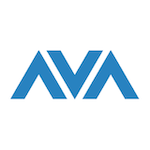Understanding Brokerage Charges in F&O Trading
Brokerage fees for F&O trading are influenced by various factors, including transaction costs, account maintenance fees, and the type of trading platform provided. Understanding these elements can help you identify the most cost-effective options.
Types of Brokerage Fees
There are primarily two types of brokerage fees: flat fees and a percentage of the transaction value. Flat fees are fixed per trade, while percentage-based fees depend on the trade volume, affecting overall costs differently based on trading activity.
Transaction Fees and Hidden Costs
In addition to standard brokerage charges, some brokers may impose additional fees such as regulatory charges, GST, and stamp duty. It's essential to review the fee structure comprehensively to avoid unexpected costs.
Choosing the Right Broker for Low F&O Charges
To select a broker with the lowest F&O brokerage charges, consider evaluating the total cost per trade, the reliability of the trading platform, and the quality of customer support. Additionally, assess any promotions or discounts that may further reduce your trading costs.
Conclusion
Minimizing brokerage charges in F&O trading requires careful consideration of various fee components and broker offerings. By understanding the different factors that contribute to overall costs, you can make informed decisions that enhance your trading efficiency and profitability.

